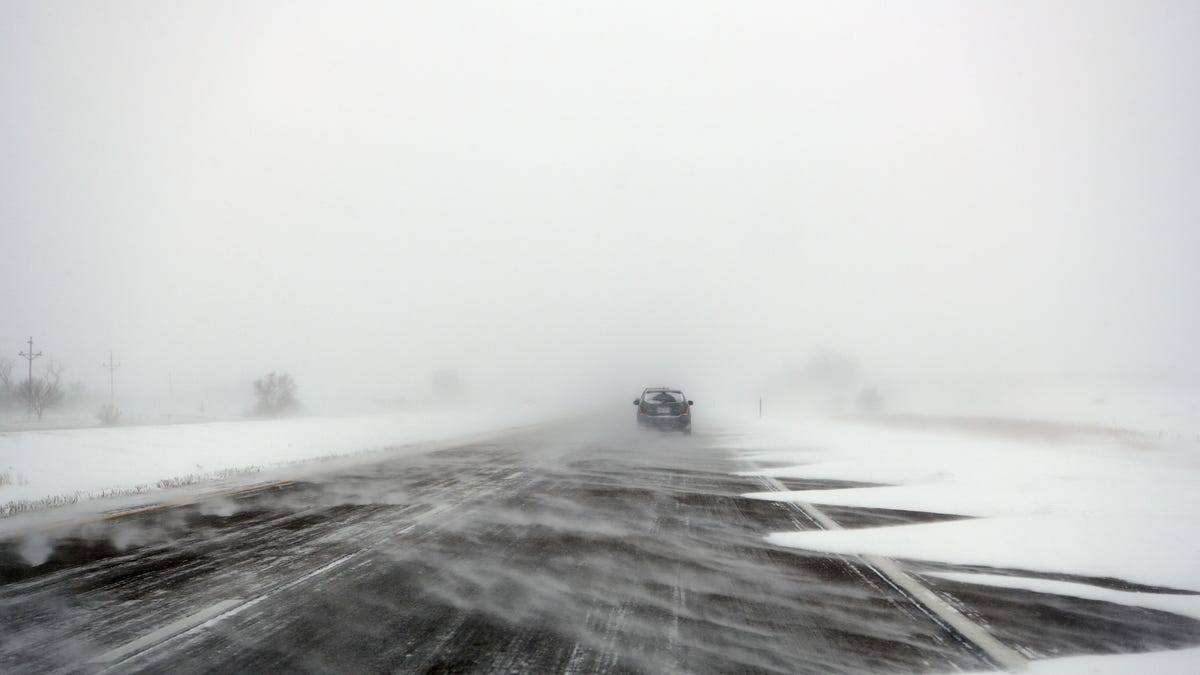Is It a Blizzard or a Snowstorm? Here Are the Differences
Prepare for winter by knowing what to expect when different storms hit your area.

What's the difference between a blizzard and a snowstorm?
You can feel the air getting crisper and the temperatures getting colder: Winter is right around the corner. While it would be great if that just meant sipping hot cocoa next to the fire and making perfect snow angels in the front yard, the reality is less romantic. As the planet continues to warm due to climate change, we're going to see increasingly extreme weather conditions.
When a winter storm hits, it's important to know exactly what you're dealing with. While some people use terms like blizzard and snowstorm interchangeably, these storms have technical definitions and present different challenges for anyone in their path. This guide will help you understand the difference between blizzards and snowstorms and what to expect when either hits your community. (You can also check out how to keep your pets safe and calm during a winter storm, and 10 home maintenance tips for the cold months.)
Snowstorm
Snowstorm is a catchall term. According to the University Corporation for Atmospheric Research, a snowstorm is any winter storm where precipitation falls as snow. If it is cold enough for the precipitation in the air to freeze before it reaches the ground, even if there is minimal snow accumulation by the end of the storm, that is a snowstorm.
Blizzard
While most people would associate a blizzard with an extreme amount of snowfall, this type of winter storm actually is not defined entirely by the amount of snow produced. Instead, according to the National Weather Service, a blizzard is defined as a winter storm that produces wind speeds of above 35 miles per hour and lasts for 3 hours or more. It's often associated with snowfall, which can reduce visibility significantly and accumulate quickly, but it requires more than just lots of snow to meet the criteria for a blizzard.
Wind speeds
One of the primary measurements that helps define a blizzard is wind speeds. For a winter storm to be considered a blizzard, it must have wind speeds that reach 35 miles per hour or more. Snowstorms have no standard for wind speeds, so it can get windy or be perfectly calm during a snowstorm.
Strong winds are common during the winter months, especially in the Northern Hemisphere, because of changes to the jet stream that runs across North America. During the summer, the jet stream pushes through Canada, resulting in lighter winds across the US. As it starts to get colder in the winter, though, that jet stream lowers its mid-level flow into the US. The result is stronger winds, particularly through the Midwest and upper East Coast. This creates the conditions for stronger winds, including the possibility of generating blizzards.
Snowfall and accumulation
Perhaps the condition that is most associated with any winter storm is snowfall. What is surprising is that there is no specific standard regarding snowfall that is needed to meet the definition of a blizzard or a snowstorm. A snowstorm simply requires any amount of snowfall. According to the National Weather Service, a winter storm must generate "considerable falling and/or blowing snow" to be considered a blizzard -- but there is no minimum amount of snowfall or accumulation required.
Snowfall occurs when air temperatures are below 32 degrees Fahrenheit, cold enough for any precipitation in the air to freeze and form snowflakes. However, if the air gets too cold, it's actually less likely that there will be snowfall. Extremely cold air doesn't hold moisture well and will produce little snowfall. When temperatures are above 0 degrees but below freezing, that is when it is most likely to experience both snowfall and snow accumulation on the ground.
Visibility
What happens when you combine wind and snow? You end up with low visibility, which is one of the other qualities a winter storm must meet in order to be considered a blizzard. Specifically, a blizzard reduces visibility to just a quarter-mile or less. Snowstorms don't carry the same specific definition of reduced visibility, but it is common for snowfall of any kind to reduce the ability to see any significant distance.
There are a number of factors that can modify the way snowfall affects visibility, including the type of snowfall and the size of flakes. Depending on these factors, which are often determined by the amount of wind as well as the moisture in the air, studies have found that visibility can be decreased by as much as a factor of 10. Windy conditions particularly result in lower visibility, as snowflakes being blown through the air at high rates of speed can reduce the ability to see far beyond what is immediately in front of you.
Winter storms can come in many forms. They can also be devastating, as cold temperatures, snowfall, and high speed winds can produce conditions that destroy property and infrastructure. This weather can result in blackouts and potentially life-threatening conditions. Understanding the type of storm that you are facing can help you prepare for what is coming and stay safe. Remember that snowstorms are a catch-all term to describe any winter storm where there is snowfall, whereas blizzards are a specific and more severe type of storm with high-speed winds, significant snowfall and greatly reduced visibility.
For more, check out how to prepare an emergency evacuation bag, and how to handle a blackout.